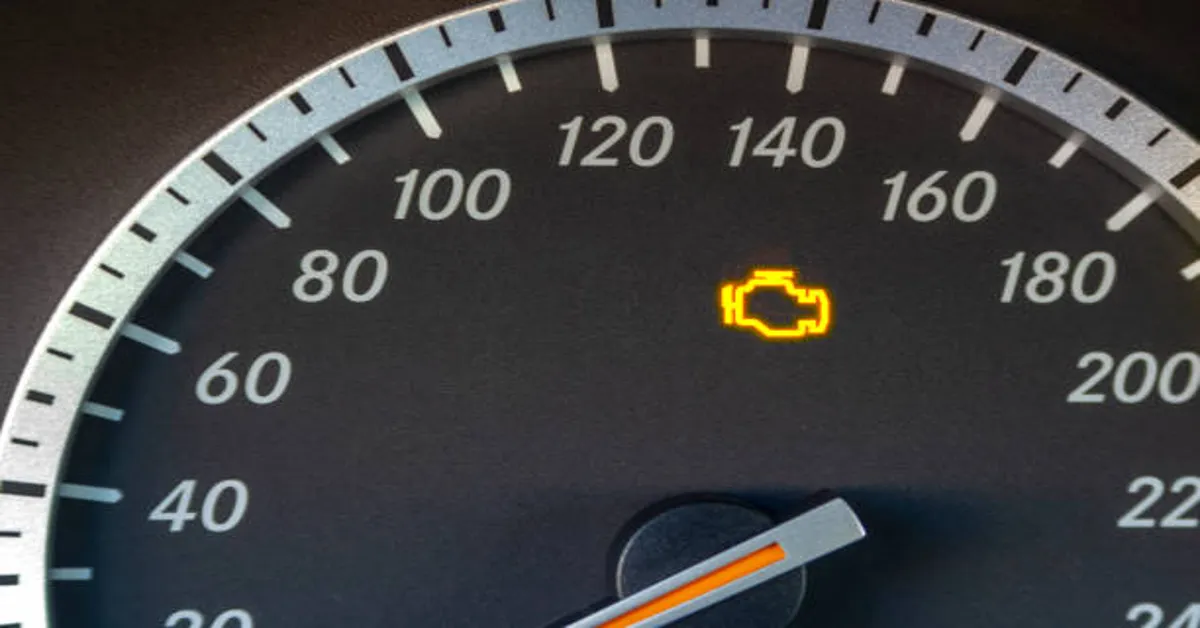When it comes to vehicle diagnostics, few indicators cause as much concern—or confusion—as the check engine light. Most drivers recognize it as an important warning sign, but the reality is that the check engine light can behave in various ways. Sometimes it’s a steady glow. Other times, it blinks. And when it blinks, it signifies a much more urgent problem. Unlike a solid check engine light that might indicate a routine issue or minor malfunction, a blinking check engine light demands immediate attention. Ignoring it or continuing to drive the vehicle without addressing the underlying issue could lead to serious mechanical damage, safety risks, and costly repairs.
To understand what a blinking check engine light means, we must first examine how your car’s onboard diagnostic system works, what systems are monitored, and why certain types of malfunctions trigger different kinds of alerts. This article takes a comprehensive look at the blinking check engine light, delving into its common causes, associated symptoms, diagnostic steps, real-world implications, and what you should do if you see it. It also explores how modern vehicles detect engine misfires, the difference between intermittent and constant blinking, and how preventative maintenance can help avoid this alarming scenario altogether.
Understanding the Engine Warning Light System
Modern vehicles are equipped with an onboard computer system called the Engine Control Unit (ECU), which continuously monitors various components of the engine, emissions, and drivetrain. It communicates with dozens of sensors throughout the vehicle to ensure everything is functioning within manufacturer-defined parameters. If a sensor detects that something is operating outside of those boundaries—whether it’s an incorrect air-fuel ratio, misfire, exhaust issue, or temperature problem—it sends a signal to the ECU. Depending on the severity and type of error, the ECU may activate the check engine light.
The check engine light, often illustrated as a small engine symbol or labeled “CHECK ENGINE,” serves as a visual cue on the dashboard. When it appears solid (non-blinking), it usually means a fault has been detected, but not one that is causing immediate harm. Examples of solid light triggers include a faulty oxygen sensor, loose gas cap, or bad spark plug. On the other hand, a blinking or flashing check engine light indicates a serious malfunction, often one that is actively damaging the engine or catalytic converter. For this reason, a blinking light should never be ignored.
What Does a Blinking Check Engine Light Really Mean?
A blinking check engine light is typically triggered by a severe engine misfire. A misfire occurs when one or more of your engine’s cylinders fail to combust fuel efficiently. Combustion issues prevent the engine from running smoothly and can lead to fuel entering the exhaust system unburned. When this happens, the catalytic converter—which is designed to burn off residual hydrocarbons—becomes overloaded and overheated. Since the catalytic converter is both vital to emissions compliance and extremely expensive to replace, the car’s computer issues a blinking warning to indicate a potentially catastrophic scenario in progress.
The blinking check engine light is not a soft warning. It’s a hard alert. The primary implication is: “Stop driving the vehicle immediately and seek professional inspection.” Continuing to drive while this light is flashing could result in the destruction of your catalytic converter, permanent engine damage, or even a sudden breakdown.
Common Causes of a Blinking Check Engine Light
While a misfire is the most common root cause, many underlying issues can trigger or contribute to a blinking check engine light. Let’s explore these in more detail:
1. Engine Misfire
Misfires happen when combustion in one or more cylinders doesn’t occur at the right time or at all. Causes include faulty spark plugs, bad ignition coils, failing fuel injectors, or even mechanical issues such as low cylinder compression. Misfires are dangerous because they produce unburned fuel that can reach the catalytic converter.
2. Ignition System Failures
Components like spark plugs, coil packs, or ignition wires may be worn out, corroded, or broken. When they fail, the spark necessary for combustion is either weak or absent, leading to misfires.
3. Fuel System Problems
Dirty fuel injectors, a malfunctioning fuel pump, or a clogged fuel filter can disrupt the fuel delivery process, starving the engine or flooding it. This leads to improper combustion and misfires, triggering the blinking light.
4. Vacuum Leaks or Air Intake Issues
Engines need a specific air-to-fuel ratio to function correctly. If there’s a vacuum leak or the air intake system is disrupted, the balance can shift, resulting in poor engine performance and misfires.
5. Failed or Clogged Catalytic Converter
While this may be a result of the blinking light rather than a cause, it’s worth noting that if the converter is already damaged or partially clogged, it can lead to back pressure and increase the likelihood of misfires.
6. Faulty Engine Sensors
A failing mass airflow sensor, crankshaft position sensor, or camshaft position sensor can misreport data to the ECU. If the computer adjusts ignition or fuel timing based on faulty input, combustion can go off track.
Symptoms That Accompany a Blinking Check Engine Light
Often, the blinking light does not appear in isolation. It’s typically accompanied by noticeable performance issues. Here are some symptoms that frequently occur alongside a blinking check engine light:
- Rough idling or shaking at a standstill or during acceleration.
- Loss of power, sluggish acceleration, or difficulty reaching higher speeds.
- Strange noises, such as popping, knocking, or backfiring from the exhaust.
- Strong fuel smell, which can indicate unburned gasoline escaping.
- Excessive exhaust smoke, often darker than usual.
- Sudden drop in fuel efficiency, caused by incomplete combustion.
- Engine stalling, especially at low speeds or during acceleration.
If your car exhibits these symptoms and the check engine light is blinking, it’s likely experiencing an active misfire and should be turned off as soon as safely possible.
What To Do If the Check Engine Light Starts Blinking
Your actions in the moments following the appearance of a blinking check engine light can significantly influence the health and longevity of your vehicle. Here’s how you should respond:
Step 1: Safely Pull Over
As soon as it is safe to do so, pull over to the side of the road or into a parking lot. Continuing to drive, even at low speeds, can cause further damage.
Step 2: Turn Off the Engine
Shutting off the engine immediately can prevent unburned fuel from entering the catalytic converter. This is the most crucial step in avoiding costly damage.
Step 3: Check for Obvious Issues
If you’re comfortable doing so, open the hood and check for any disconnected wires, visible smoke, or burning smells. Do not attempt deep repairs unless you’re trained and equipped to do so safely.
Step 4: Call for a Tow
Driving the vehicle to a repair shop with a blinking check engine light is risky. It’s safer to have the car towed to a certified mechanic or dealership to prevent further damage.
Step 5: Get a Diagnostic Scan
A mechanic will use an OBD-II scanner to read the error codes stored in the car’s ECU. These codes reveal which cylinders are misfiring and help pinpoint the root cause, whether it’s electrical, mechanical, or related to fuel delivery.
Diagnostic Process: How Mechanics Handle It
After scanning the vehicle and retrieving the trouble codes, mechanics follow a step-by-step diagnostic sequence. For example, if the code indicates a misfire in cylinder 3 (often shown as P0303), they’ll inspect that cylinder’s spark plug, ignition coil, fuel injector, and compression levels. If necessary, they’ll swap components with neighboring cylinders to see if the problem moves. This helps isolate whether the issue is the component or something more systemic.
Some garages also perform live data analysis, looking at the real-time performance of sensors and combustion patterns. This helps spot intermittent issues that a static scan may not reveal. If necessary, they may remove and inspect the spark plug for damage, carbon buildup, or oil fouling, all of which can hint at underlying problems.
Differences Between Flashing and Steady Check Engine Light
It’s crucial to distinguish between a blinking check engine light and one that is steady or non-flashing. While a steady light should not be ignored, it usually signals a less critical problem. Common causes of a steady light include:
- Faulty oxygen sensor
- Loose or damaged gas cap
- Failing EGR valve
- Faulty mass airflow sensor
- Emissions-related minor fault
A flashing light, on the other hand, is a high-priority alert that suggests an immediate mechanical or combustion failure. The key takeaway is: steady means schedule a repair; blinking means stop now.
Preventing a Blinking Check Engine Light
Many of the issues that trigger a blinking check engine light can be prevented through regular maintenance and attentive driving habits. Here are a few preventive measures:
- Replace spark plugs and ignition coils at manufacturer-recommended intervals.
- Use high-quality fuel to reduce carbon buildup and improve combustion.
- Regularly check and clean fuel injectors to ensure proper delivery.
- Replace air filters to prevent dirt from affecting the air-fuel ratio.
- Schedule routine engine diagnostics, even when no symptoms are present.
- Check engine oil and coolant levels to avoid heat-related stress on combustion.
- Listen to your vehicle—rough idling or delayed acceleration may be early signs.
Staying proactive with vehicle care helps prevent misfires and reduces the risk of a blinking check engine light.
Long-Term Damage from Ignoring a Blinking Light
Failure to address a blinking check engine light can lead to extensive damage, especially if the problem is a persistent misfire. Over time, this can result in:
- Burnt-out catalytic converters
- Damaged oxygen sensors
- Melted spark plug tips
- Broken piston rings or valves
- Severe engine overheating
- Complete engine failure
Because catalytic converters can cost upwards of $1,000 to replace—and engines even more—addressing the blinking light early is not just safer; it’s financially wise.
ALSO READ: StreamEast.is: Understanding Its Functionality, Content Access, User Risks, and Ethical Implications
FAQs About Blinking Check Engine Light
1. Is it safe to drive with a blinking check engine light?
No, a blinking check engine light indicates a serious problem like an engine misfire that can cause immediate damage. You should stop driving and seek help.
2. What’s the most common cause of a blinking check engine light?
The most common cause is a severe engine misfire, which can be triggered by faulty spark plugs, ignition coils, or fuel system issues.
3. Can a blinking check engine light stop blinking on its own?
It might stop blinking if the condition improves temporarily, but the underlying issue remains and should be diagnosed immediately to prevent further damage.
4. Will my car pass an emissions test with a blinking check engine light?
Absolutely not. A blinking light indicates a serious emissions issue. The car will fail any inspection until the problem is diagnosed and repaired.
5. How much does it cost to fix the issue behind a blinking check engine light?
It varies. Minor issues like spark plug replacements might cost $100–$200, while catalytic converter damage can run over $1,000. Early intervention saves money.









